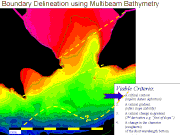
Boundary Based on Bathymetry
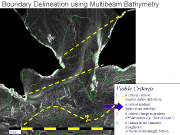
Boundary Based on Slope
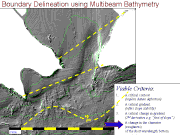
Boundary Based on Roughness
Boundary Based on Critical Contour
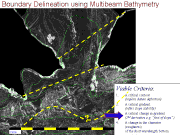
Boundary Based on 2nd Derivative
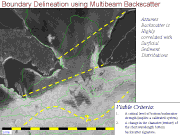
Boundary Based on Surficial Sedinments
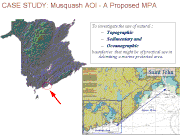
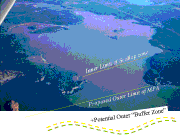 Two boundaries had already been provisionally defined, an inner one
limiting the penetration of scallop dragging rights and an outer one defining
the seaward limit of the MPA. Both of these had initially been defined using
straight lines between terrestrial landmarks, making no account of the submerged
topography or the oceanographic circulation in the area.
Two boundaries had already been provisionally defined, an inner one
limiting the penetration of scallop dragging rights and an outer one defining
the seaward limit of the MPA. Both of these had initially been defined using
straight lines between terrestrial landmarks, making no account of the submerged
topography or the oceanographic circulation in the area. 
Boundary Based on Bathymetry |

Boundary Based on Slope |

Boundary Based on Roughness |
|
Boundary Based on Critical Contour
|

Boundary Based on 2nd Derivative |

Boundary Based on Surficial Sedinments |
The most interesting feature is a clear flow separation of the ebb and flood plumes. On the flood, Gooseberry Island acts to block off the main alongshore flow resulting in a shadow zone in the lee of the island in which the flood tide stream is never developed. The southern edge of the shadow zone is defined by a line of heavy shear that exactly marks the edge of the low backscatter sediment boundary. On the early ebb, the main discharge occurs hugging the west side of the estuary mouth. Thus the main flux of fine-grained sediment leaving the estuary is deposited in that region. The next flood tide, resuspends only the sediments dumped seaward of the shear line. We can thus explain the presence and location of the sediment boundary that so closely aligns with the proposed outer boundary. Because we now understand the mechanism for this sediment boundary (reflecting modern, not relict processes and thus significant to critical species habitat) we may justify using it (or a reasonable approximation of it) as a legal boundary. The most important observation to make concerning the use of the outer boundary is that, if the current proposed line is used it has the following strange consequence:
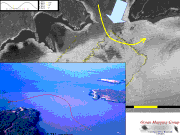
The most unexpected phenomena occurs on the last stages of the ebb when the ADCP flow suggest that the water exiting the estuary actually moves off to the east in a reverse direction to the main offshore ebb flow. This phenomena was confirmed using aerial photography at low water spring tide (see photo) showing a clear plume of high suspended sediment exiting the estuary and being advected to the east. last modified April 2003 by John E. Hughes Clarke |